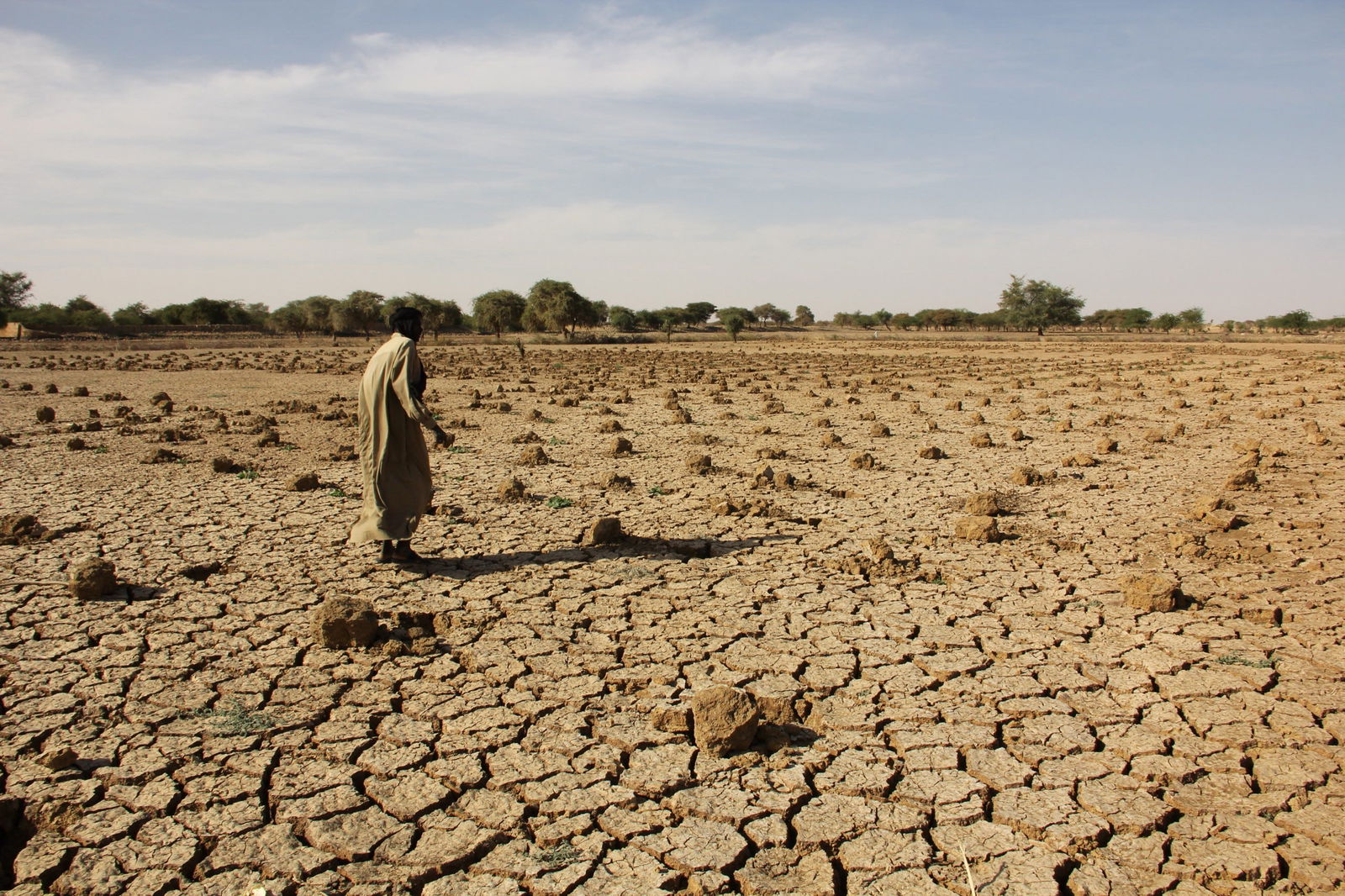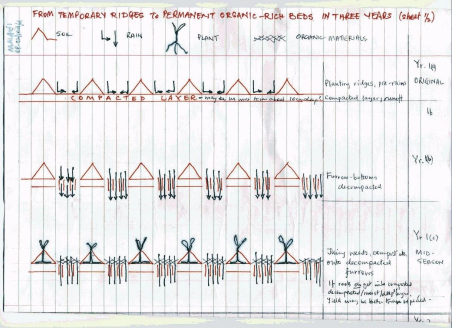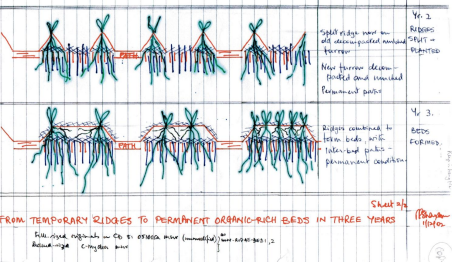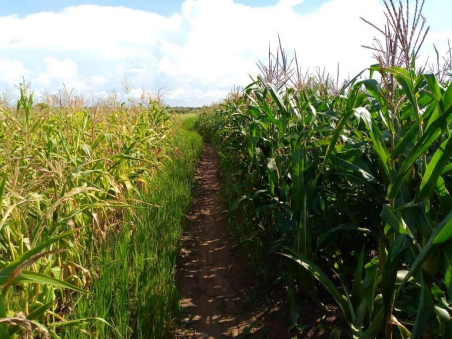Restoring the natural balance by breaking it up!
 Unsplash
Unsplash Unsplash
Unsplash· 6 min read

Picture 1: Cracked, compacted soil in Ethiopia. (Source: Medium)
As a teenager growing up in the 80s, I was devastated by the images of the famine in Ethiopia that rightly dominated the news. From the resulting global outrage came efforts to provide support, most famously by Live Aid. We were told that the main reason for this crisis was that drought had led to the famine, with harrowing images of starving children sitting on baron land apparently proving the point. However, the real reason is far more complicated.
Decades later as I moved into ecology, and particularly when studying environmental management, I started to realise that the drought was, in large part due to vegetation loss, management practices, as well as metrological factors. In Picture 1 you can see hardened, cracked soil. However this is just the tip of the issue, and we must dig deeper to understand the real problem.
In Sub-Saharan Africa most smallholder farming is done in about the first 200mm of soil. Below this is usually a concrete like layer of compacted soil, or hardpan. This predominately manmade layer of soil prevents or dramatically reduces water and air from penetrating further, halting microbial development and reducing the soil health and creating increasingly infertile land. This lack of penetration also means that when the rains come, the vital topsoil is quickly supersaturated and is eroded off the farmland, polluting surface water systems and causing devastating flooding, damage and often loss of life.
A study conducted by the FAO in the 90s identified this issue in the context of Malawi, resulting in an important, if overlooked paper, An Investigation Into The Presence Of A Cultivation Hoe Pan Under Smallholder Farming Conditions (M.G. Douglas, S.K. Mughogho, A.R. Saka, T.F. Shaxson and G. Evers. FAO 1999).
Rather than letting the paper sit on a shelf Francis Shaxson, one of the soil scientists who conducted the study, took this a stage future. One season whilst discussing the national issue of soil erosion during the rains with his colleague and friend John Crossley, District Commissioner for Mzuzu in Northern Malawi, they hit (literally) on a possible solution.
John said, 'What can we do about this dreadful impoverishment of the prepared soil being lost in the runoff?'. Francis replied, 'I believe the sub-surface layers might be compacted, and that by using a pickaxe to let the water into the soil, you could store more water therein, thus lessening the risk of losing the soil by erosion'.
Francis then designed the first profile drawing (Figure 1, Figure 2) of how a change in agricultural practice 'could' solve this issue, harvest rainwater AND at the same time dramatically improve crop yields for smallholder farmers, Deep Bed Farming was born!

Figure 1: From temporary ridges to permanent organic rich beds in three years - Sketch 1 (Francis Shaxson)

Figure 2; From temporary ridges to permanent organic rich beds in three years - Sketch 2 (Francis Shaxson)
Over the last 20 years Tiyeni has developed Deep Bed Farming (DBF) as a low-cost method of sustainable agriculture, that doubles crop yields from the first season, using minimal, organic inputs (see below). It is the only government adopted method (Malawi 2021) in Sub-Saharan Africa that deals with the hardpan AND actively harvests rainwater where it lands on the fields, over 90%. These two factors reanimate the soil microbes and recharge the shallow aquifers, resulting in immediate crops results and improved food and water security for the farmers and their communities. DBF fields are more drought resilient and when combined with intercropping and cover crops, both established regenerative agricultural methods, fields can become 12 times more productive after 5 years.

Figure 3: Deep bed farming system (Tiyeni)
The beauty is that you only need to break the hardpan once, then it is about sustainable land management through minimal soil disturbance and using natural processes to stop the soil from becoming recompacted. Active roots systems throughout the year, plus adding mulch and compost provided by last year's vegetation, helps to create a vibrant world beneath your feet, and an environment that vegetation can thrive in!
In Picture 2 and Picture 3 you can see two examples from Malawi. Both crops were planted at the same time by the same farmer. The ones on the left would have had fertilizer added, the ones on the right wouldn't. They have received the same amount of rain and sunshine, yet the DBF crops on the right are much larger, healthier and produced two, large cobs, instead of one smaller cob. Note in the first photo the closed boxed furrows that hold the water until in percolates into the shallow aquifers. The water on the field on the left has all drained away from the land where it is needed, and into surface water systems where it can cause damage to ecosystems.

Picture 2; Farmer showing the crops growth difference between ridge (left) and DBF (right)

Picture 3: A farmer's field of maize in Malawi showing the results of ridge (left) and DBF (right) methods.
The Deep Bed Farming method is not some complicated approach, it is about resetting and working with the land so that natural processes can thrive, vegetation can flourish and most importantly communities can have the security of the basic human rights of access to food and water.
In 2023 I attended the fantastic Africa's Food Systems Forum 2023 Summit in Dar es Salaam, Tanzania. The theme was the very inspirational “Recover, Regenerate, Act:
Africa’s Solutions to Food Systems Transformation.” However, after 4 days of great events, talks and discussions I didn't hear any mention of the hardpan, or rainwater harvesting and decline groundwater levels. This was surprising since 94.5% (Stockholm International Water Institute, 2018) of agriculture in Africa relies on this diminishing resource. It also led me to surmise that all the talk about how to improve production for smallholder farmers was only considering the 200mm of farmed topsoil, not the potential of the soil below.
As an ecologist, I like to look at complete systems, how they work and importantly how they interact. Soil science is new to me but the whole sector in only just scratching the surface (pun intended) of the potential of one of the two most important foundations of life on earth.
illuminem Voices is a democratic space presenting the thoughts and opinions of leading Sustainability & Energy writers, their opinions do not necessarily represent those of illuminem.
illuminem briefings

Agriculture · Public Governance
Michael Wright

Agriculture · Environmental Sustainability
Yury Erofeev

Food · Agriculture
Politico

Climate Change · Agriculture
The Guardian

Climate Change · Agriculture
The Guardian

Agriculture · Climate Change